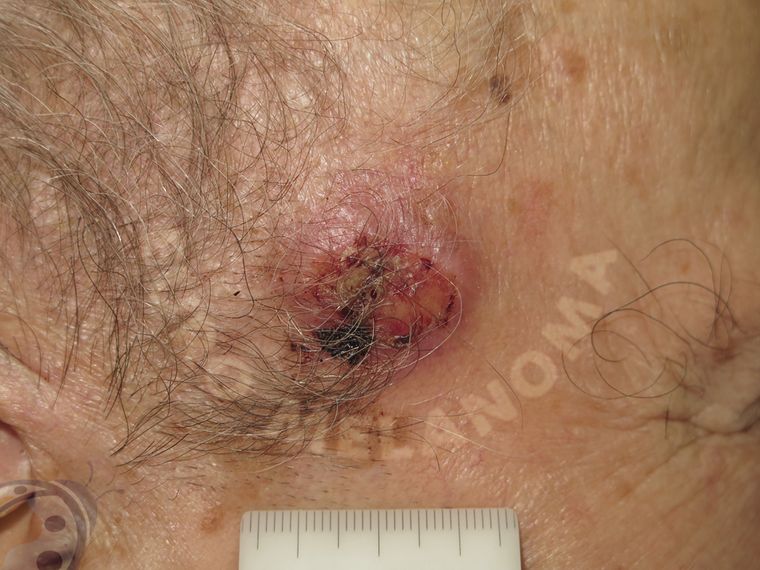Merkel cell carcinoma
Select another type of skin cancer:
Merkel cell carcinoma is a rare, aggressive form of skin cancer. In Europe the incidence rate reported is 0.59 per 100 000 and it is a cancer mainly diagnosed after the age of 50. The lesion is asymptomatic, enlarges rapidly and is more frequent in immunosuppressed patients. This tumour may be induced by a polyomavirus or by UV exposure.

Appearance and diagnosis
Merkel cell carcinoma commonly appears red or violaceous. A biopsy is needed to make the histopathological diagnosis. Once the diagnosis of MCC is confirmed, presence of lymphogenic and distant metastases must be investigated.
MCCs are classified in 4 different stages: Stage 0 (in situ); Stage I ( localized disease, primary lesion <2 cm); stage II (localized disease primary lesion <2 cm); stage III (nodal metastases) and Stage IV (distant metastases).
Location
Merkel cell carcinoma is found on UV exposed area of the body, mainly the head (40%) followed by the limbs (upper and lower extremities, respectively 23 % and 15 %) but all parts of the body can be affected.
Evolution-Prognosis
Merkel cell carcinoma needs to be detected early. The integrity of the immune system is crucial in the development of MCC. Immunosuppressed individuals were shown to have both an increased in incidence and a poorer prognosis treatment.
The treatment of patients with MCC depends on the stage of the disease at presentation, the involvement of lymph nodes and the specific co-morbidities. Importantly, any intervention should be discussed with a multidisciplinary tumour board. Surgery with local margins (1-2cm) is recommended to avoid recurrence and is the preferred treatment for patients with local disease. Radiotherapy may be used to complete or replace surgery and reduce the probability of recurrence and to improve overall survival. Chemotherapy may be used but new immunotherapy agents (immune checkpoint inhibitors) are preferred options over chemotherapy.





